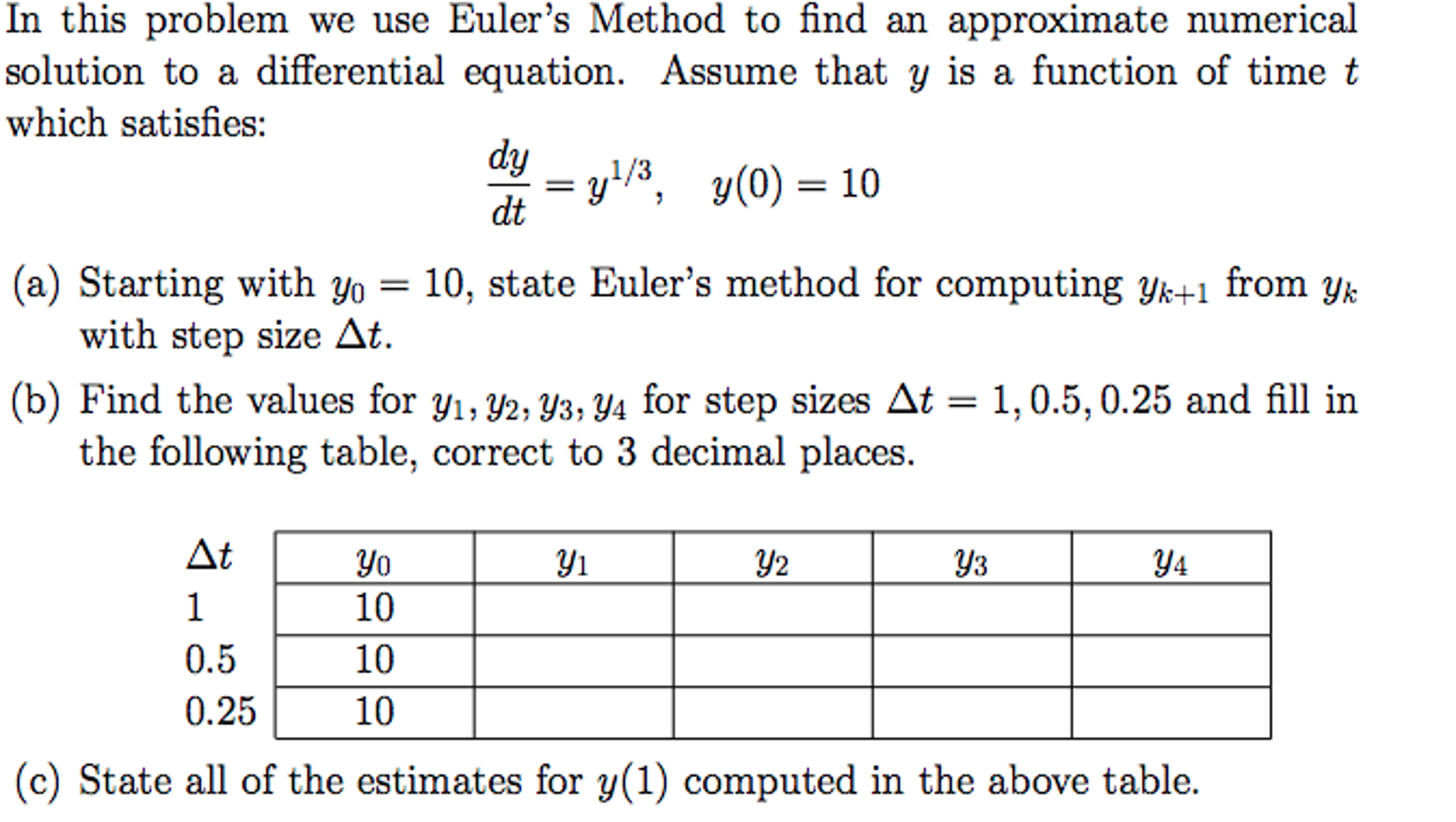

Differentiation and integration using Mathematica.Ħ.4. Solution of a system of linear equations using Mathematica.Ħ.3. Dealing with complex numbers using Mathematica.Ħ.2. Miscellaneous use of Mathematica in computational physics.Ħ.1. The Runge-Kutta solution of radioactive decay law using Mathematica 6.0Ħ. Euler solution of radioactive decay law using Mathematica 6.0.ĥ.3.

The differential equation for radioactive decay.ĥ.2. Radioactive decay : numerical solution of differential equations using Euler and second order Runge-Kutta methods using Mathematica.ĥ.1.

Runge-Kutta solution of damped harmonic oscillation using Mathematica 6.0ĥ. Euler solution of damped harmonic oscillation using Mathematica 6.0.Ĥ.3. Damped harmonic oscillator : the differential equations of motion.Ĥ.2. Damped harmonic oscillator : numerical solution of differential equations using the Euler and second order Runge-Kutta methods using Mathematica.Ĥ.1. Runge-Kutta solution of simple harmonic oscillation using Mathematica 6.0Ĥ. Euler solution of simple harmonic oscillation using Mathematica 6.0.ģ.3. Motion under Hooke's law force : the differential equations of motion.ģ.2. Simple harmonic oscillator : numerical solution of differential equations using the Euler and second order Runge-Kutta methods using Mathematica.ģ.1. Runge-Kutta solution of free fall using Mathematica 6.0ģ. Euler solution of free fall using Mathematica 6.0.Ģ.3. Motion under constant force : the differential equations of motion.Ģ.2. Motion under constant force : numerical solution of differential equations using Euler and second order Runge-Kutta methods using Mathematica.Ģ.1. Second order Runge-Kutta solution of the differential equationĢ. Euler solution of differential equation.ġ.2. Numerical solution of differential equations using Euler and second order Runge-Kutta methods.ġ.1. A smaller value of StartingStepSize (say, $1/20$) would have resulted in something that looks smoother:īut of course at the expense of more evaluations of the right-hand side.1. Due to this, the InterpolatingFunction is unable to make a smooth-looking derivative. The phase plot looks ugly here, since the step size was not very small and the interval of integration was not sampled well. Here's how to "teach" NDSolve the Euler method: Euler] := , Had the Euler method not been built-in, one could still use NDSolve's method plug-in framework, which enables NDSolve to "know" how to use Euler's method.


 0 kommentar(er)
0 kommentar(er)
